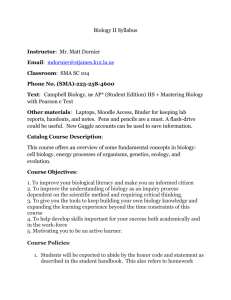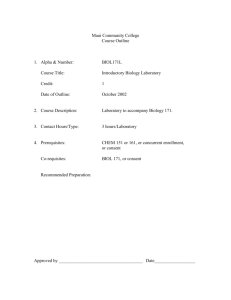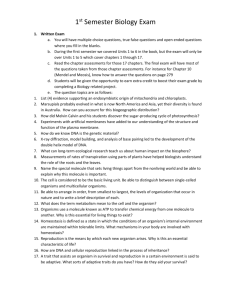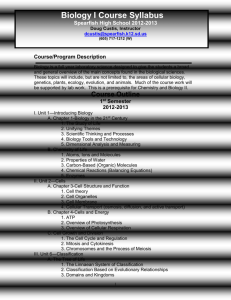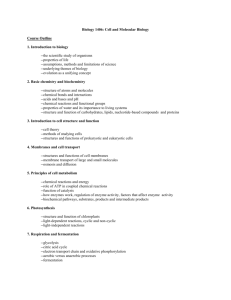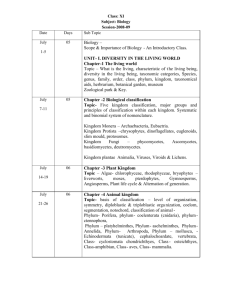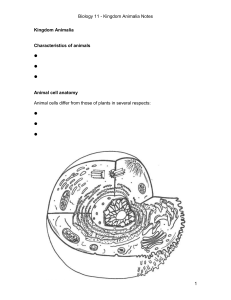Biology Syllabus - Hinsdale School District
advertisement
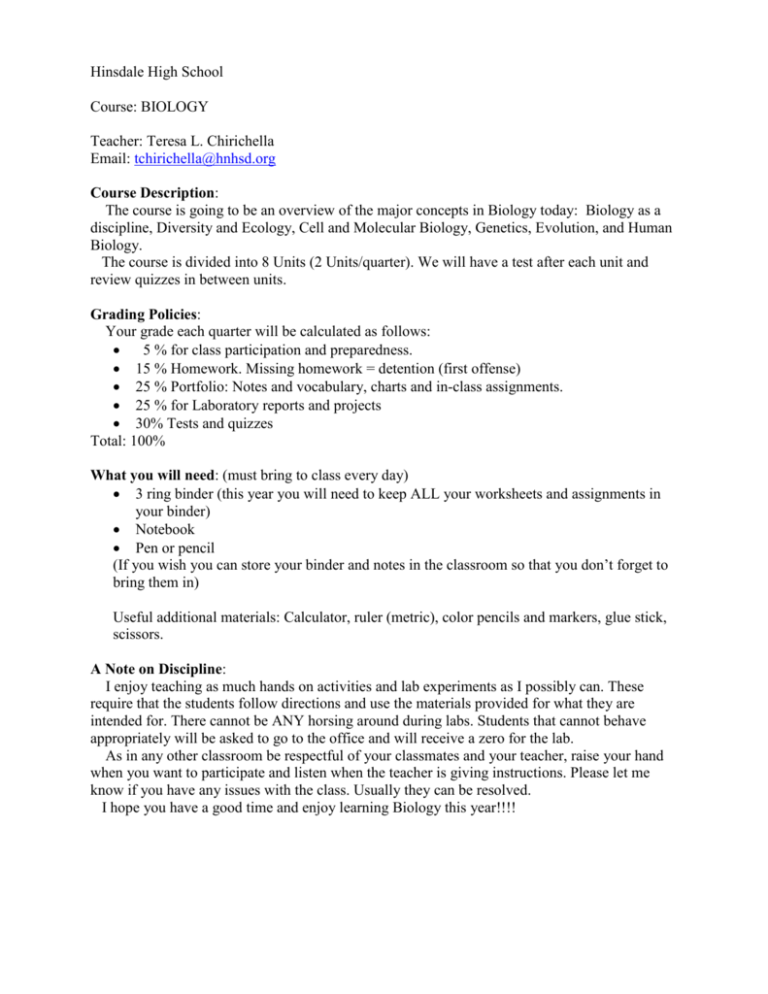
Hinsdale High School Course: BIOLOGY Teacher: Teresa L. Chirichella Email: tchirichella@hnhsd.org Course Description: The course is going to be an overview of the major concepts in Biology today: Biology as a discipline, Diversity and Ecology, Cell and Molecular Biology, Genetics, Evolution, and Human Biology. The course is divided into 8 Units (2 Units/quarter). We will have a test after each unit and review quizzes in between units. Grading Policies: Your grade each quarter will be calculated as follows: 5 % for class participation and preparedness. 15 % Homework. Missing homework = detention (first offense) 25 % Portfolio: Notes and vocabulary, charts and in-class assignments. 25 % for Laboratory reports and projects 30% Tests and quizzes Total: 100% What you will need: (must bring to class every day) 3 ring binder (this year you will need to keep ALL your worksheets and assignments in your binder) Notebook Pen or pencil (If you wish you can store your binder and notes in the classroom so that you don’t forget to bring them in) Useful additional materials: Calculator, ruler (metric), color pencils and markers, glue stick, scissors. A Note on Discipline: I enjoy teaching as much hands on activities and lab experiments as I possibly can. These require that the students follow directions and use the materials provided for what they are intended for. There cannot be ANY horsing around during labs. Students that cannot behave appropriately will be asked to go to the office and will receive a zero for the lab. As in any other classroom be respectful of your classmates and your teacher, raise your hand when you want to participate and listen when the teacher is giving instructions. Please let me know if you have any issues with the class. Usually they can be resolved. I hope you have a good time and enjoy learning Biology this year!!!! Course Outline UNIT 1: The Study of Life Definition of Biology and its branches. Life Science Careers Characteristics of Life Levels of Organization: From Atom to Organisms. Tools of Biology: Types of Microscopes Steps of The Scientific Method LAB 1: Use of Light and Stereo Microscope LAB 2: Using the Scientific Method. LAB 3: Living and Non-Living Things. TEST 1 UNIT 2: Classification and Diversity of Living Things Diversity of Cells: Prokaryotic vs. Eukaryotic Cells Prokaryotic Domains: Archaea and Eubacteria Domain Eukarya: o Plant Kingdom o Animal Kingdom o Kingdom Protista o Kingdom Fungi Viruses and Prions Methods of classification Taxonomic categories: Kingdom to species LAB. 4 Diversity of Plants LAB. 5 Diversity of the Animal Kingdom LAB. 6 Diversity of the Fungi Kingdom LAB. 7 Diversity of the Protist Kingdom LAB. 8 Growing bacteria from the environment TEST 2 Quarter Project 1: Herbarium, Insect Photographic Safari or other Diversity related project. UNIT 3: Chemistry of Life: Biochemistry Elements of Living things Types of Bonds Water and solutions Acids and Bases Molecules of life: Carbohydrates, Proteins, Lipids and Nucleic Acids Protein Structure Energy and Enzymes DNA discovery, structure and replication. DNA vs.RNA LAB 9: Water properties LAB 10 : Enzymes LAB 11: DNA extraction from Kiwi Fruit TEST 3 UNIT 4: Cell Structure and Function Discovery of the Cell and the cell theory Structure of a Prokaryotic Cell Structure of a Eukaryotic Cell: Animal and Plant Cells Eukaryotic cell organelles and their functions Structure of the Cell Membrane Osmosis and Diffusion Cellular respiration and the Mitochondria. Photosynthesis and the Chloroplast Protein synthesis: Nucleus, Ribosomes and Golgi apparatus Cell signaling and communication LAB 12: Osmosis lab LAB 13: Cellular respiration LAB 14: Photosynthesis TEST 4 Quarter 2 project: Making models: Cell models (prokaryote, plant or animal) Virus models, DNA structure and replication model, Protein structure model, etc. ---------------------------------------------MID YEAR EXAM----------------------------------------------- UNIT 5: Reproductions and Genetics: Cell Reproduction: Mitosis and Meiosis Asexual and Sexual reproduction, Life Cycles, Alternation of generations. Mendel and Heredity Human Genetics: Pedigrees and karyotypes, genetic disorders. DNA technology and genetic engineering: Cloning, Recombinant DNA, etc. LAB 15: Mitosis lab LAB 16: Dragon Genetics TEST 5 UNIT 6: Evolution and Natural Selection: History of evolutionary thought Darwin’s theory Natural Selection Speciation Evolutionary trees and cladograms LAB 17: Natural Selection lab. LAB 19: Making cladograms lab TEST 6 Quarter 3 project: Family pedigree or research a genetic disorder. UNIT 7: Animal body plans, organs and organ systems. Overview of animal phyla Patterns of development Nervous systems Digestive system Excretory system Respiratory system Circulatory system Integumentary system Muscular and skeletal system Endocrine system LABS: Dissections of different animal phyla TEST 7 UNIT 8: Ecology: Interdependence of living things Populations and Communities Throphic levels: Primary producers, consumers, relationships in ecosystems Energy flow in the environment RIVER ECOLOGY LAB TEST 8. -------------------------------------------------FINAL EXAM-------------------------------------------------


